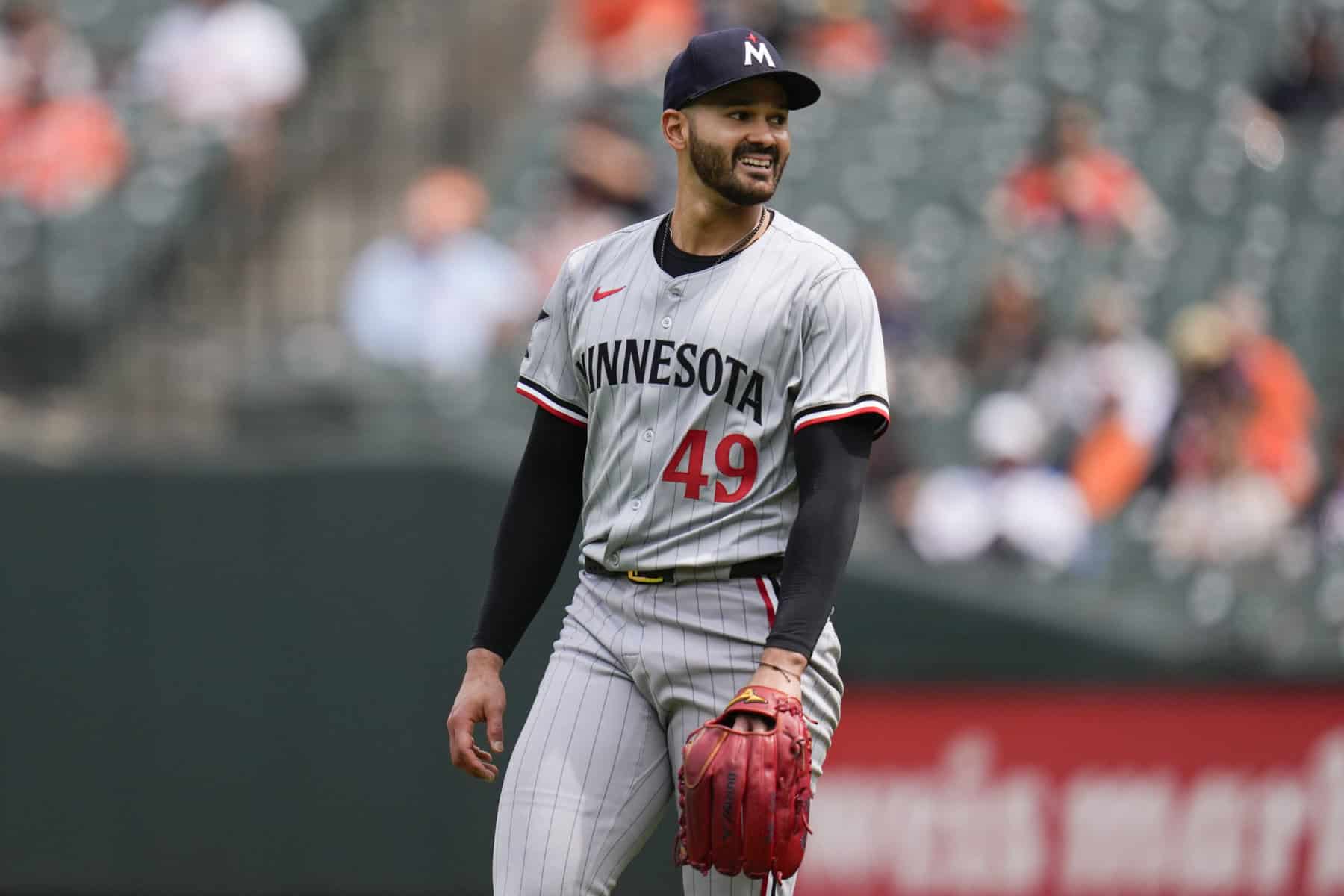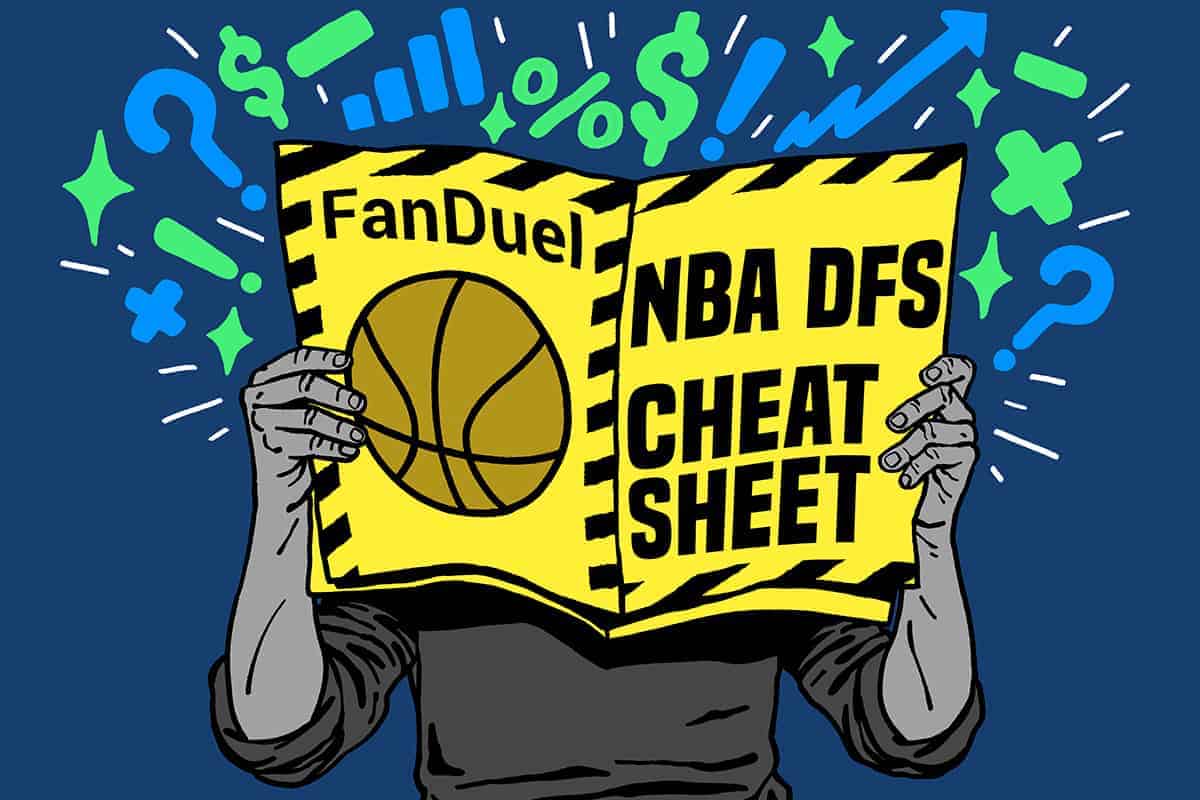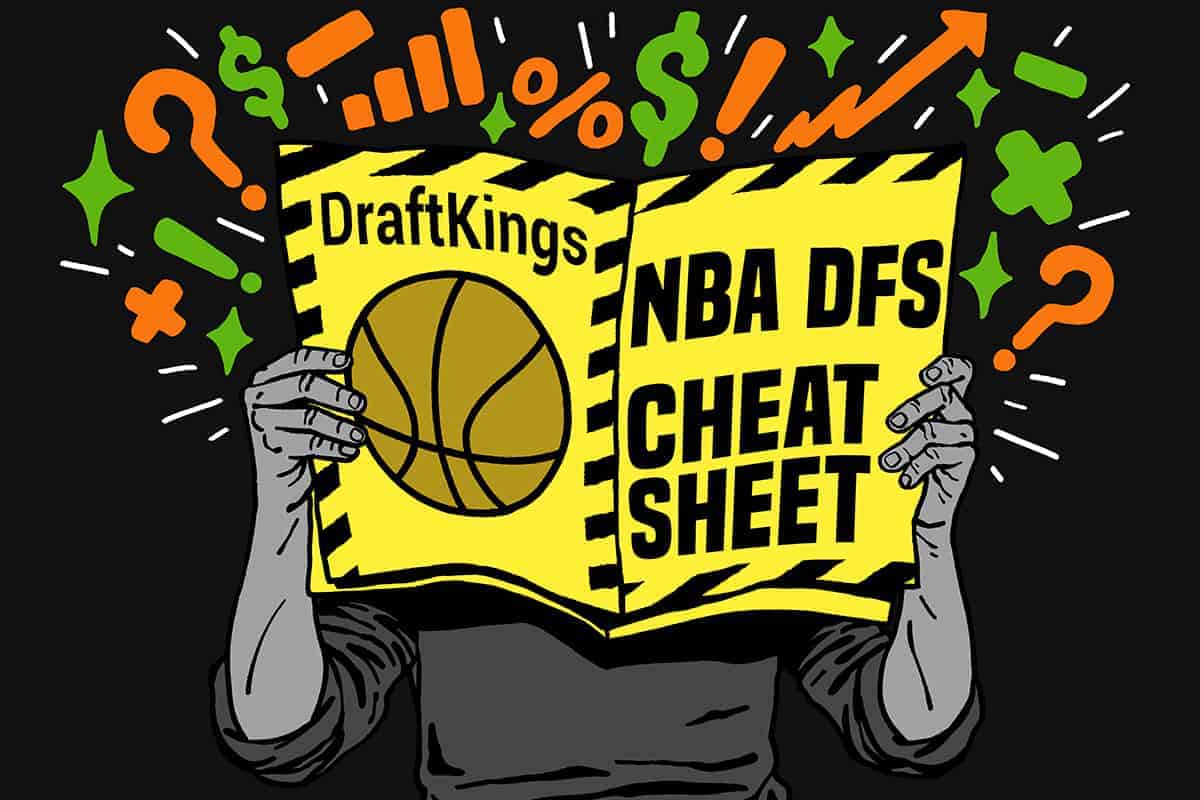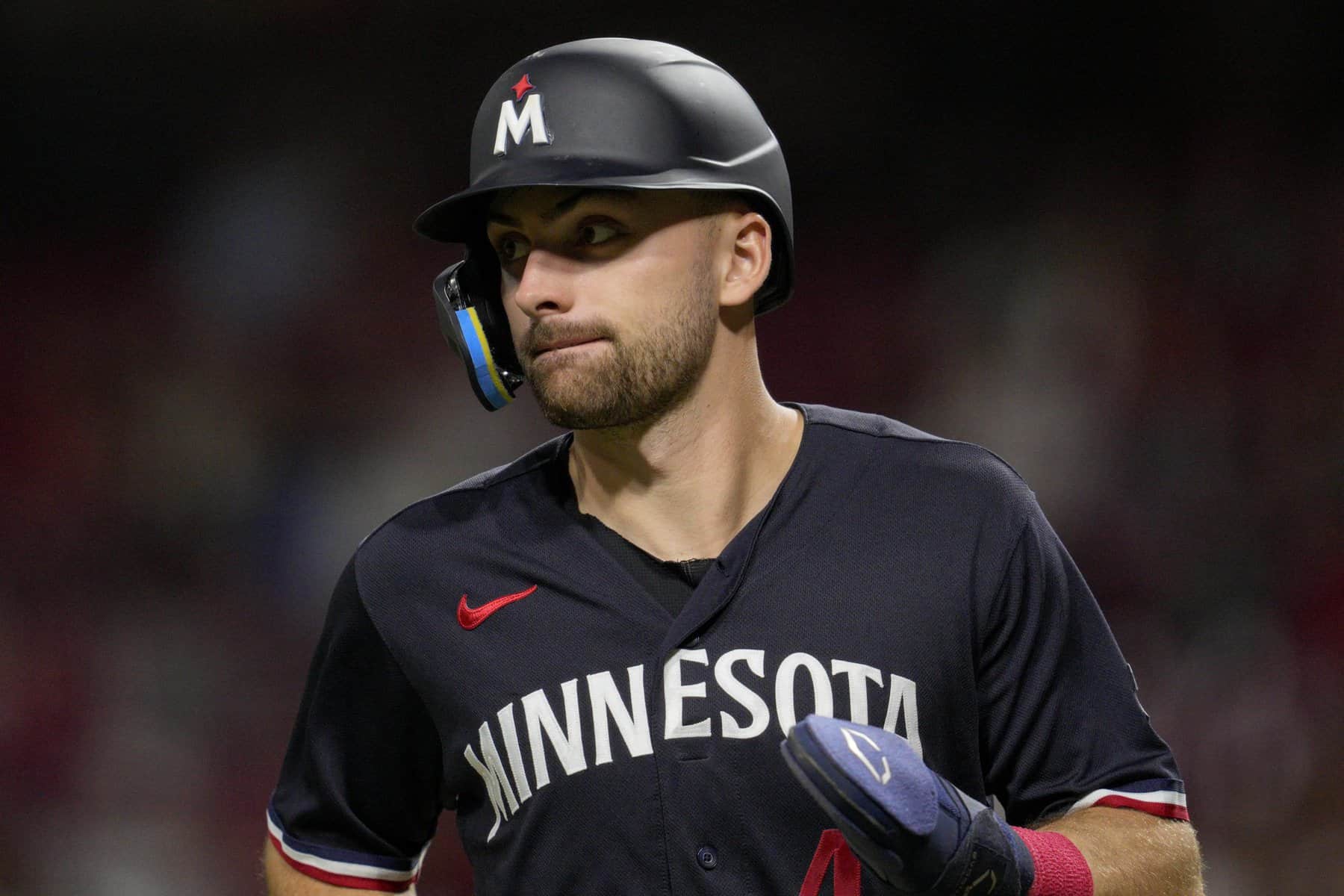Following Joey Logano‘s second straight Pennzoil 400 victory, NASCAR heads to California. So do we with our NASCAR DFS research as we prepare for the Auto Club 400 at Fontana, Calif.
Podcast fan? Did you know all our daily YouTube shows are on our podcast channel? Click this link to check out our Awesemo podcast stations and get entered into our podcast giveaway, simply: Like, Rate, Review & Subscribe and you’ll be entered to win a FREE monthly Awesemo+ platinum pass! If you’re not on iTunes and can’t leave a comment, just hit us up on Twitter with a screenshot of your rating and we’ll get you entered in!
Auto Club Speedway
The aforementioned speedway is a D-shaped, asphalt-paved oval measuring two miles in length. This length would classify it as a superspeedway. However, it’s missing one important characteristic: banking. Unlike Daytona and Talladega, Auto Club’s banking in the turns only goes up to 14 degrees. This doesn’t mean we’ll see drafting or pack racing, yet it still translates into speed. Currently, the track record for single-lap speed belongs to Gil de Ferran of the old CART series who posted a blazing 241.428 mph. As far as NASCAR is concerned, the track record was set in 2016 when Denny Hamlin ran 188.511 mph during qualifying.
Auto Club was originally the brainchild of Roger Penske. It was designed to be a sister track to the similarly shaped and sized Michigan International Speedway, a track Roger Penske had purchased in 1972. For research purposes, later on we will refer back to the two Michigan races from last year. Although Auto Club ran the same 550 Horsepower package that was utilized at 1.5-mile tracks in 2019, Michigan is our closest track in terms of comparing apples to apples.
NASCAR Track Trends – Laps Led
Ever since 2011, NASCAR only makes one visit per season to Fontana. This, in turn, makes our research easier as we don’t have to separate spring races from those in the fall. However, it gives us a smaller sample size, in this case, just three races.
Regardless, over the past three seasons, we’ve seen a trend that existed at California pre-2017. In fact, dating back to 2013, we’ve only had one race at ACS where the driver who led the most laps didn’t lead over half of the race. Granted, there are only 200 laps run here in each race. However, leading over half of the laps is a feat in of itself, stage breaks or not.
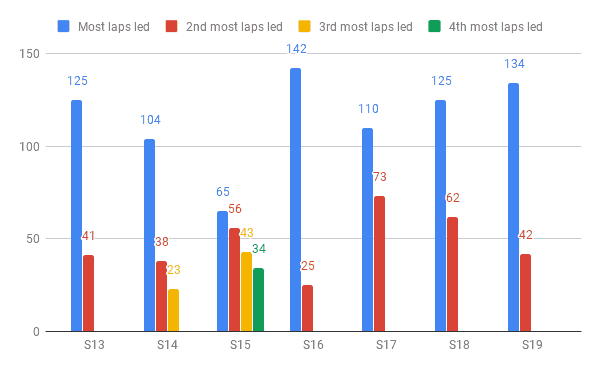
One distinction that can definitely be made from 2013-2016 compared to 2017-2019 is the pole sitter. Only once from 2013 to 2016 did the pole sitter lead the most or second-most laps at ACS (2015). However, in back-to-back seasons, the pole sitter not only went on to lead the most laps but also won the race. Furthermore, if you look at the Laps Led data tab on the NASCAR DFS Race Sheets, you’ll see it was a driver starting top four who went on to the lead the second-most laps in those events.
It’s Austin Dillon’s Fault, or Is It?
The question then is what happened last season? 2018 saw Martin Truex Jr. win from the pole, the same year he won the title. 2017 saw Kyle Larson win from the pole. This was part of a stretch where Larson was simply unbeatable at two-mile ovals.
So, what if I told you the 2019 pole sitter was Austin Dillon? The RCR cars were notorious for trimming out their vehicles for qualifying in 2019. All this resulted in was a good starting spot and then falling back as the race went on. Dillon failed to lead a single lap in the 2019 race and finish 10th.
Would a similar outcome to 2017 or 2018 have occurred with a different pole sitter? We can assume so, but we’ll never know for sure. It is worth mentioning in the first Michigan race, Joey Logano led 163 of 203 laps en route to victory from the pole. Thus, contingent on just who wins the pole, we may be all in or all out.
Check us out on TWITTER, where we talk sports, share articles and have lots of giveaways. Just click HERE
Qualifying Matters
This is generally where we would dive into the pole sitter, but we already hit that in the last section. Thus, let’s look at the rest of the field.
If I flip to the Heat Map section of the NASCAR DFS Race Sheets, I see a trend. The further back you start, the worse your chance is of finishing in the top five, much less top 10. Due to the propensity of long green flag runs, it’s easy for cars to get lapped. If not for the stage breaks, we would probably see even more cars get lapped. If we’re not going to see cautions for wrecks or debris, then it makes it that much harder for lapped cars to get back on the lead lap and advance their position.
For example, in 2018, we saw five cautions in total. Two were for segments ending and three were for single-car accidents. By the end of lap 200, only 10 cars remained on the lead lap. Sixteen drivers were just a single lap down. The last caution of that race occurred on lap 130. The end of the race saw 68 green flag laps and drivers got picked off towards the end.
Auto Club Speedway Heat Map – Top 10
Let’s look back at the heat map. If I categorize the field by best average finish, the starting numbers go:

Auto Club Speedway Heat Map – Bottom 10
On the flip side, the bottom-10 starting positions for average finishing position are:

Let me phrase this another way. If you look at just drivers starting 18th or worse over the last three ACS races, you find just one top-five. Just one out of 60 drivers managed to finish with a top-five (Clint Bowyer). If we expand the search into top-10s for the same crew of drivers, we get six. Meanwhile, I can find 10 top-fives among drivers who started in the top 10. If I expand it into top-10s, I have 20 such instances.
Auto Club Speedway Heat Map – In the Middle
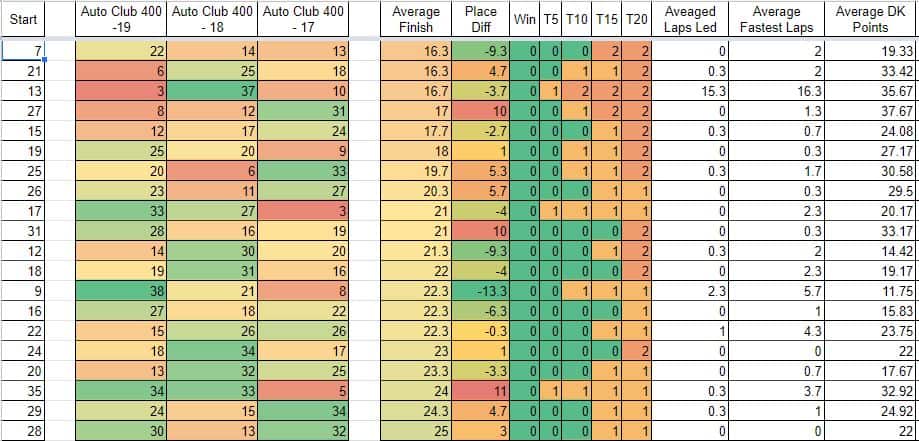
Just in case you were wondering about the middle, here you go. Here are the 11th- through 29th-best average finishes at Auto Club in the past three races.
DraftKings/FanDuel Implications
So, let’s take what we know about the lap leaders and car movement, or lack thereof. We combine these factors and what does it look like optimally?
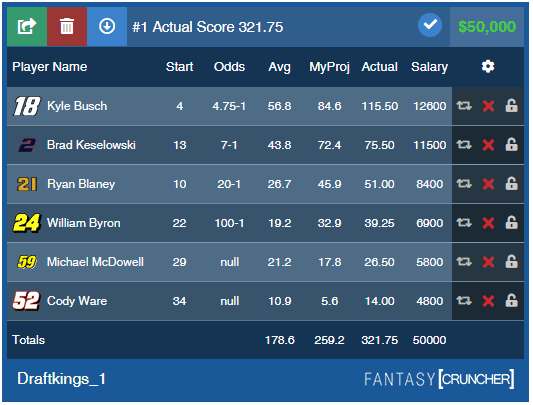
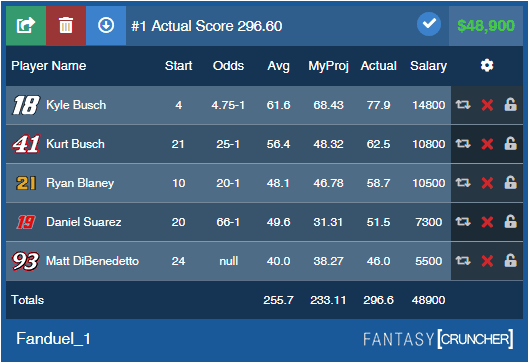
Obviously, you need the top lap leader for ACS in NASCAR DFS, especially when they’re bound to lead over half the race. However, after that, this is where the two sites diverge from one another. With only 200 laps, laps led points are de-emphasized on FanDuel. On DraftKings, rostering a second lap leader is a debate. On FanDuel, it’s simply not necessary unless they have place differential to add.
For Brad Keselowski, that translated into just 4.3 laps led points on FanDuel. However, on DraftKings, that created 10.75 bonus points. That is not to mention the 14 additional points Keselowski picked up for fastest laps, a stat the carries no weight on FanDuel. Furthermore, Keselowski scored twice as many place differential points on DraftKings than he did on FanDuel. This all culminated in squeezing in Keselowski on DraftKings with Kyle Busch. Meanwhile, Keselowski simply wasn’t necessary as Kurt Busch scored five fewer points for $3,000 less.
After the Keselowski/Busch division, things synced back up. Ryan Blaney became the third key cog with his fifth-place finish plus place differential. Rosters were then filled out with place differential/finishing position points. I want to point out that the punt play of Cody Ware made the DraftKings optimal. All Ware did was pick up six place differential spots and finish 28th. However, his salary made combining the two top lap leaders together plus Ryan Blaney worthwhile. It’s too early to say whether you’ll need a punt on DraftKings as of now. Nonetheless, know it’s probably not in play on FanDuel.
Looking for more NASCAR DFS picks content? We’ve got loads of articles, data, cheatsheets and more on the Awesemo NASCAR home page, just click HERE


